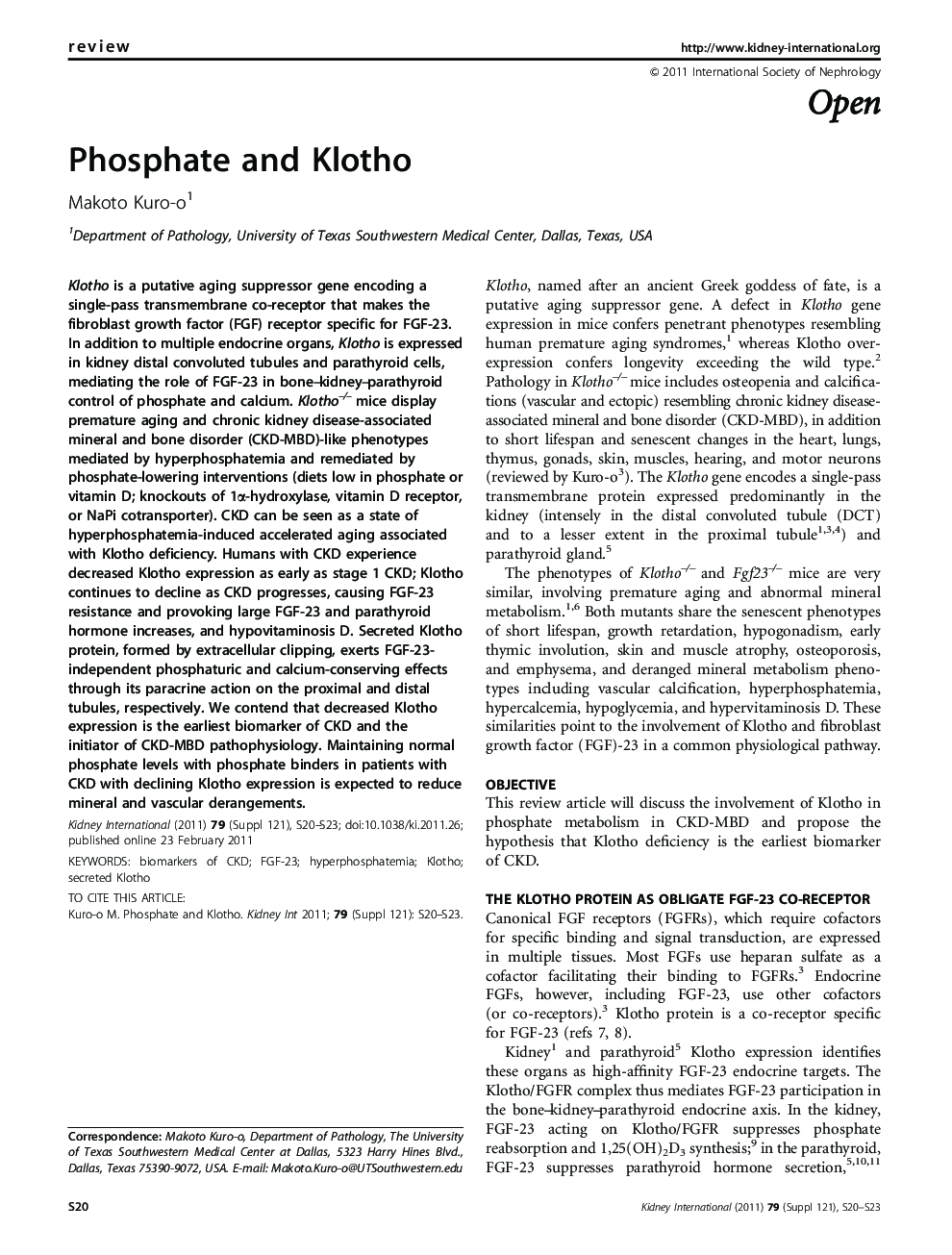| Article ID | Journal | Published Year | Pages | File Type |
|---|---|---|---|---|
| 8773247 | Kidney International | 2011 | 4 Pages |
Abstract
Klotho is a putative aging suppressor gene encoding a single-pass transmembrane co-receptor that makes the fibroblast growth factor (FGF) receptor specific for FGF-23. In addition to multiple endocrine organs, Klotho is expressed in kidney distal convoluted tubules and parathyroid cells, mediating the role of FGF-23 in bone-kidney-parathyroid control of phosphate and calcium. Klothoâ/âmice display premature aging and chronic kidney disease-associated mineral and bone disorder (CKD-MBD)-like phenotypes mediated by hyperphosphatemia and remediated by phosphate-lowering interventions (diets low in phosphate or vitamin D; knockouts of 1α-hydroxylase, vitamin D receptor, or NaPi cotransporter). CKD can be seen as a state of hyperphosphatemia-induced accelerated aging associated with Klotho deficiency. Humans with CKD experience decreased Klotho expression as early as stage 1 CKD; Klotho continues to decline as CKD progresses, causing FGF-23 resistance and provoking large FGF-23 and parathyroid hormone increases, and hypovitaminosis D. Secreted Klotho protein, formed by extracellular clipping, exerts FGF-23-independent phosphaturic and calcium-conserving effects through its paracrine action on the proximal and distal tubules, respectively. We contend that decreased Klotho expression is the earliest biomarker of CKD and the initiator of CKD-MBD pathophysiology. Maintaining normal phosphate levels with phosphate binders in patients with CKD with declining Klotho expression is expected to reduce mineral and vascular derangements.
Keywords
Related Topics
Health Sciences
Medicine and Dentistry
Nephrology
Authors
Makoto Kuro-o,
